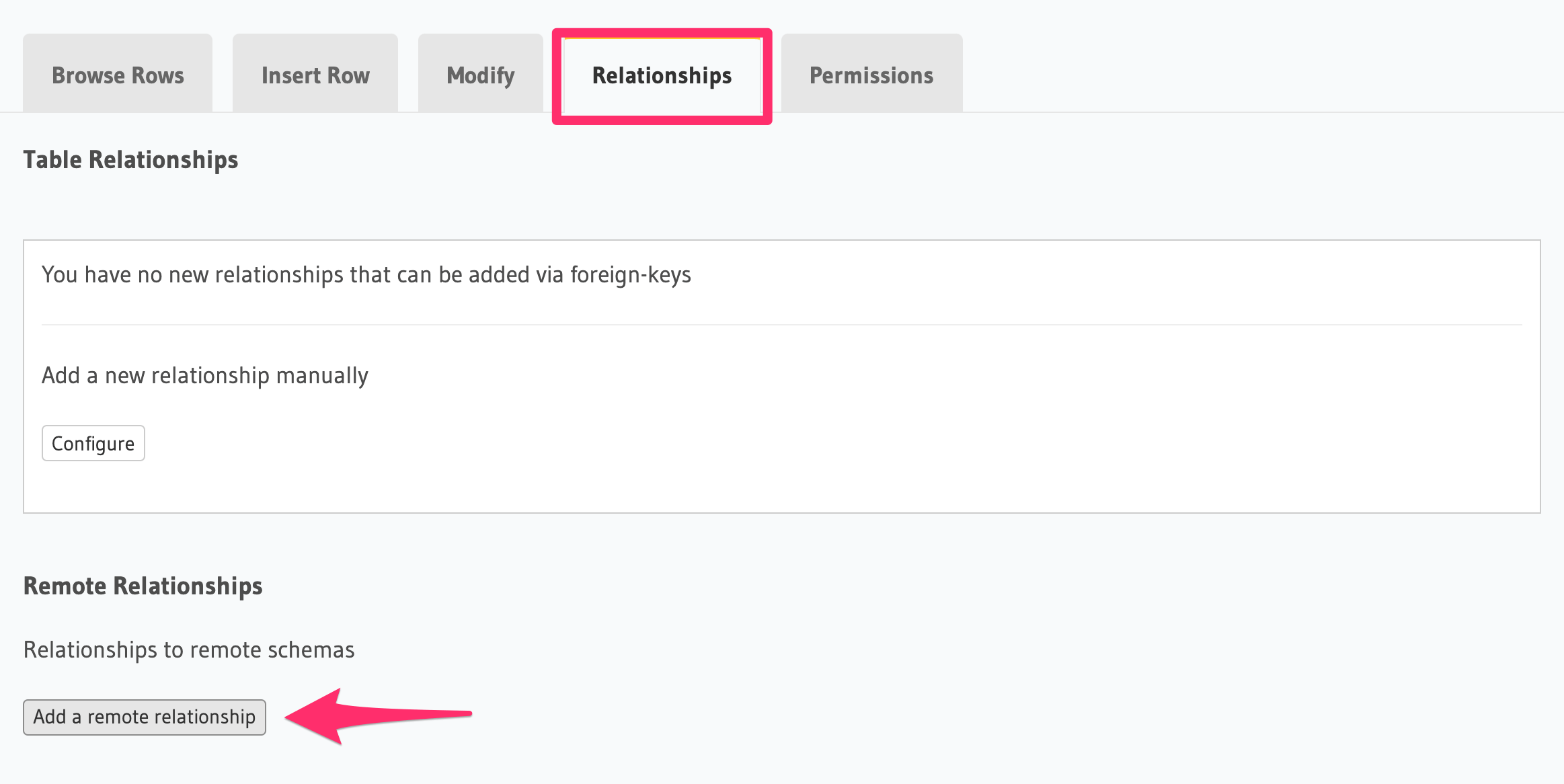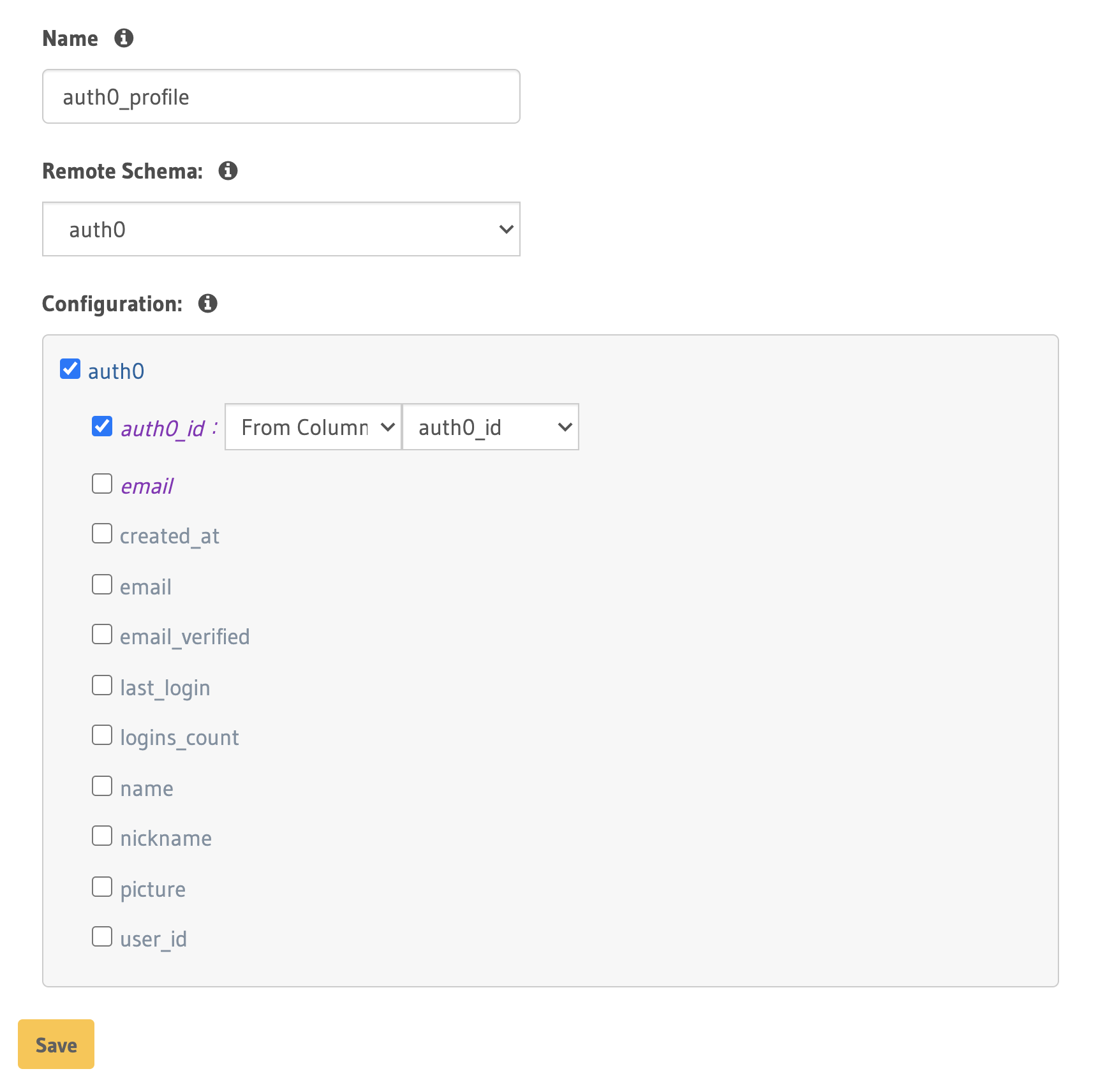Postgres: Remote schema relationships¶
Table of contents
Introduction¶
Remote schema relationships extend the concept of joining data across tables, to joining across tables and remote data sources. Once you create relationships between types from your database and types created from APIs, you can then “join” them by running GraphQL queries.
These APIs can be custom GraphQL servers you write, third party SaaS APIs, or even other Hasura instances.
Because Hasura is meant to be a GraphQL server that you can expose directly to your apps, Hasura also handles security and authorization while providing remote joins.
Note
To see example use cases, check out this blog post.
Supported from
Remote schema relationships are supported from versions v1.3.0 and above.
Create remote schema relationships¶
Step 1: Open the remote relationship section¶
- From your table, go to the
Relationshipstab. - Click the
Add a remote relationshipbutton.

Step 2: Define the relationship¶
The following fields can be defined for a remote schema relationship:
- Name: Define a name for the relationship.
- Remote Schema: Select a remote schema among all the ones you’ve created.
- Configuration: Set up the join configuration, to inject values as input arguments of the remote schema field.
- From column: Input injected from table column values.
- From static value: Input injected from a static value of your choice.
For this example, we assume that our schema has a users table with the fields name and auth0_id.
You can add a remote schema relationship by adding it to the tables.yaml in the metadata directory:
- table:
schema: public
name: users
remote_relationships:
- definition:
remote_field:
auth0profile:
arguments:
id: $auth0_id
hasura_fields:
- auth0_id
remote_schema: auth0
name: auth0
Apply the metadata by running:
hasura metadata apply
You can add a remote schema relationship by using the create_remote_relationship metadata API:
POST /v1/query HTTP/1.1
Content-Type: application/json
X-Hasura-Role: admin
{
"type": "create_remote_relationship",
"args": {
"name": "auth0_profile",
"table": "users",
"hasura_fields": [
"auth0_id"
],
"remote_schema": "auth0",
"remote_field": {
"auth0": {
"arguments": {
"auth0_id": "$auth0_id"
}
}
}
}
}
In this example, we’ve added a remote schema which is a wrapper around Auth0’s REST API (see example here).
- We name the relationship
auth0_profile. - We select the
auth0schema that we’ve added. - We set up the config to join the
auth0_idinput argument of our remote schema field to theauth0_idcolumn of this table (in this case, theuserstable).
Step 3: Explore with GraphiQL¶
In the GraphiQL tab, test out your remote schema relationship.
query {
users {
name
auth0_profile {
nickname
email
last_login
}
}
}
Remote schema relationship permissions¶
Remote schema relationship permissions are derived from the remote schema permissions defined for the role. When a remote relationship cannot be derived, the remote relationship field will not be added to the schema for the role.
Some of the cases in which a remote relationship cannot be derived are:
- There are no remote schema permissions defined for the role.
- The role doesn’t have access to the field or types that are used by the remote relationship.
Note
Remote relationship permissions apply only if remote schema permissions are enabled in graphql-engine.

